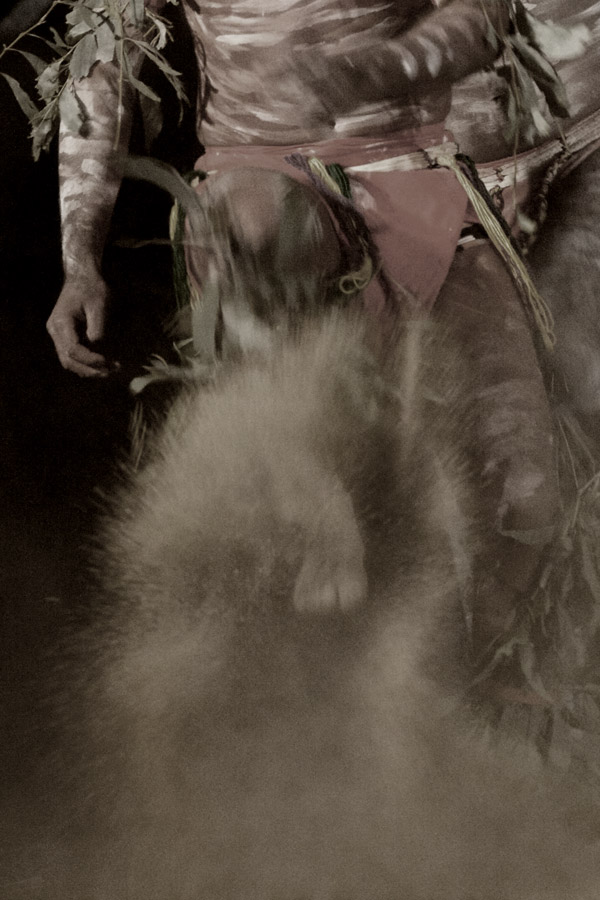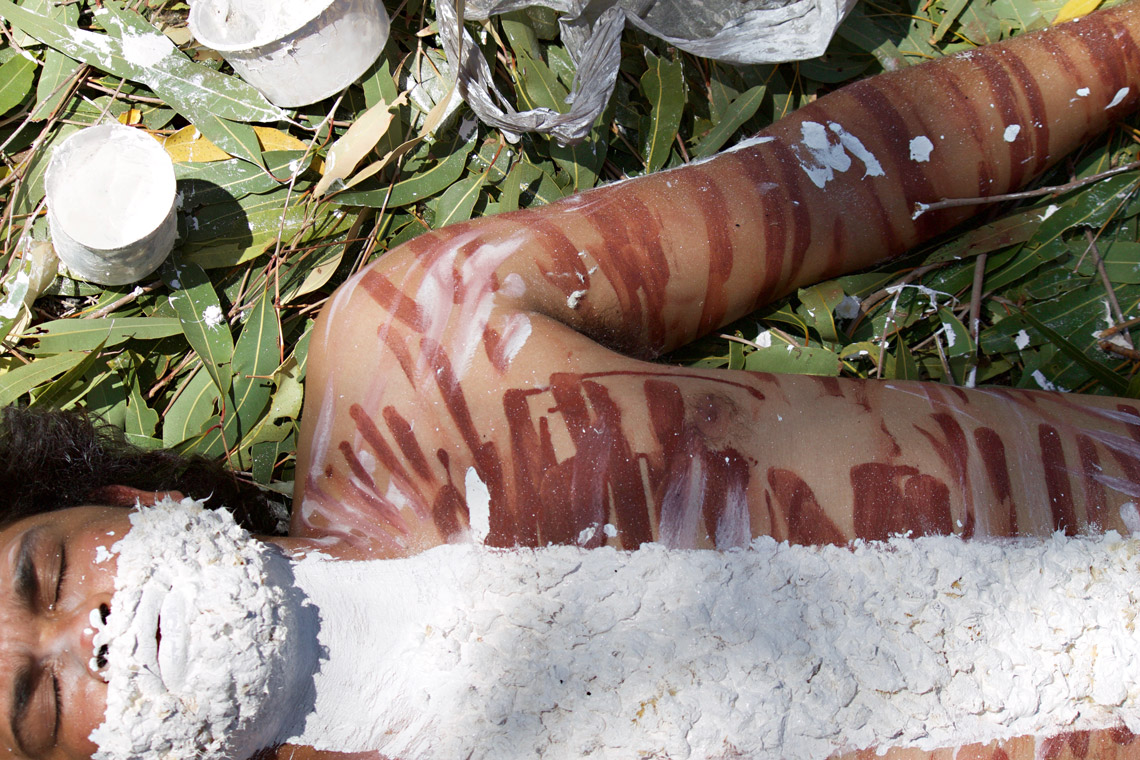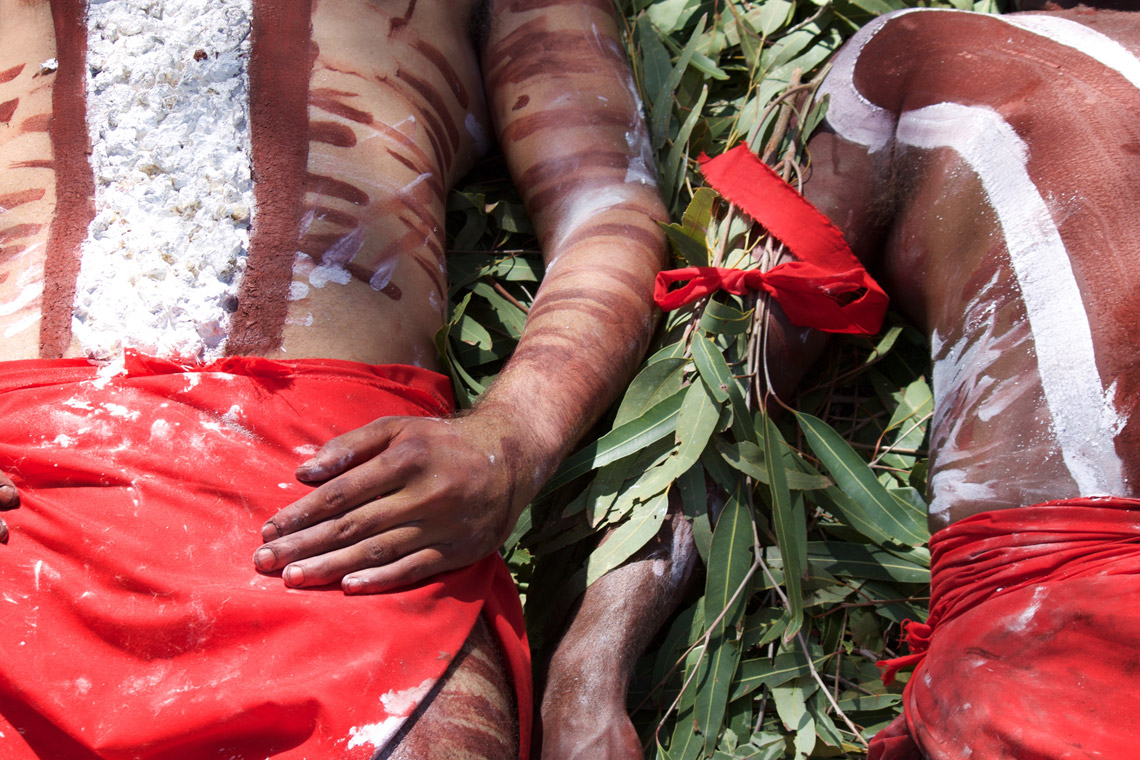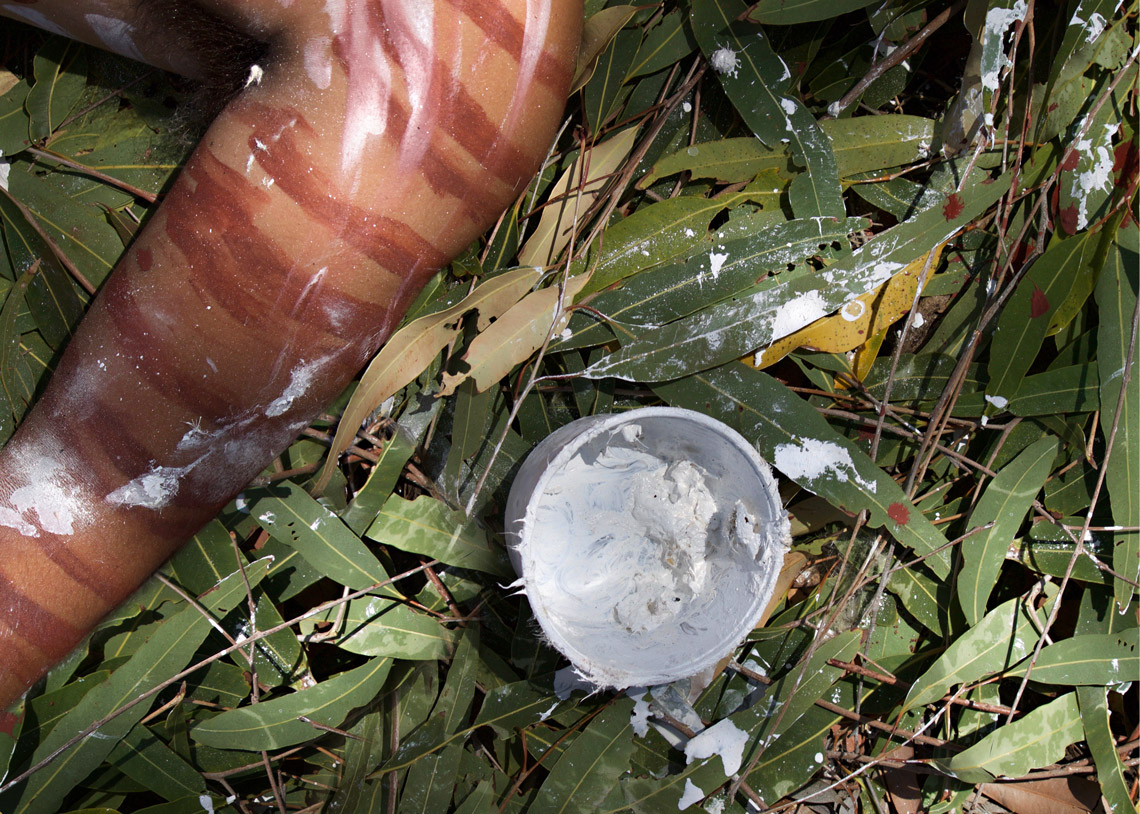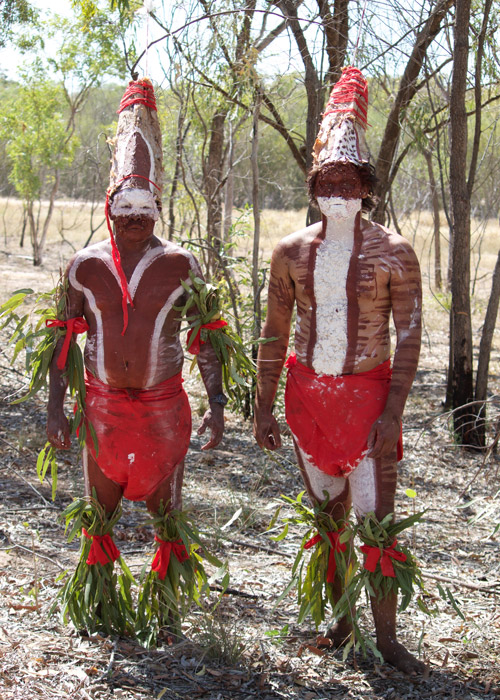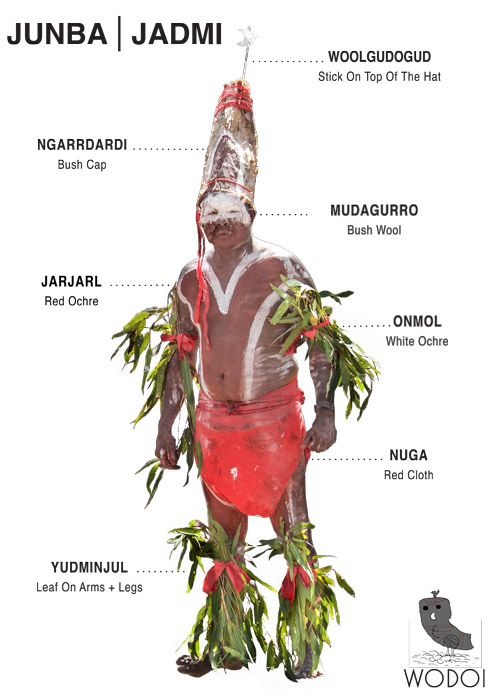JUNBA PROJECT | WODOI + JUN.GUN
Through the Wandjina Wunggud groups, Law is guided by Wodoi (the spotted nightjar) and Jun.gun (the owlet nightjar). Wodoi represents the ornod ‘bone’ skin and Jun.gun the amarlad ‘dust’ skin. The Lalai stories of their exploits, fighting, chasing, sharing, underpin the Laws of marriage, sharing and collaboration that are carried on the Kimberley through creative forms such as Junba dance-song and storytelling.
Concerned to ensure that children and young people learn and follow their correct skin, in 2016 young members of The Junba Project, a collaborative initiative of the Dolord Mindi Media Centre, delved into the Dorlod Mindi and Wurnannangga Storylines collections to identify visual imagery and knowledge about Wodoi and Jun.gun and bring this knowledge, held in the archive, into their contemporary creative Junba practices.
A capstone project was led by young Ngarinyin/Nyikina cultural leader, John Ngunjuma Divilli, who identified illustrations and video explanations of wodoi and jun.gun body paint designs, done by elder manambarra Paddy Neowarra in 2002. Guided by elders Matthew Dembalarri Martin and Ernest Nulgit, Divilli and his peers researched traditional plant materials, ochres, and practices, referred to by Neowarra, and followed his designs to recreate and ‘bring back to life’ the proper way of painting skin on bodies. Dancers transformed into vivid red - white - red (Jun.gun skin) and white - red - white (Wodoi skin) Law holders. Speaking to a conference audience at the university of Colorado, Denver, John Divilli explained:
"When we look at the old photos, drawings and video we see things we never saw before. Like the way the old people painted up with their wodoi skin or jun.gun skin."
The Mowanjum Commission consists of:
- Slow motion action video inclusive of a soundscape featuring audio of Judmi / junba and Paddy Neowarra voice over (6 minute loop)
- 6-8 photos of wodoi and jun.gun skin paint printed (A1)
- 4 Paddy Neowarra original drawings (A4) (2002)
Additional text that can be provided:
- Skins and ochre
- Skins and choreography
- Skins and song order
- Skins and Wurnan
Contemporary photographic prints - Johnny Divilli
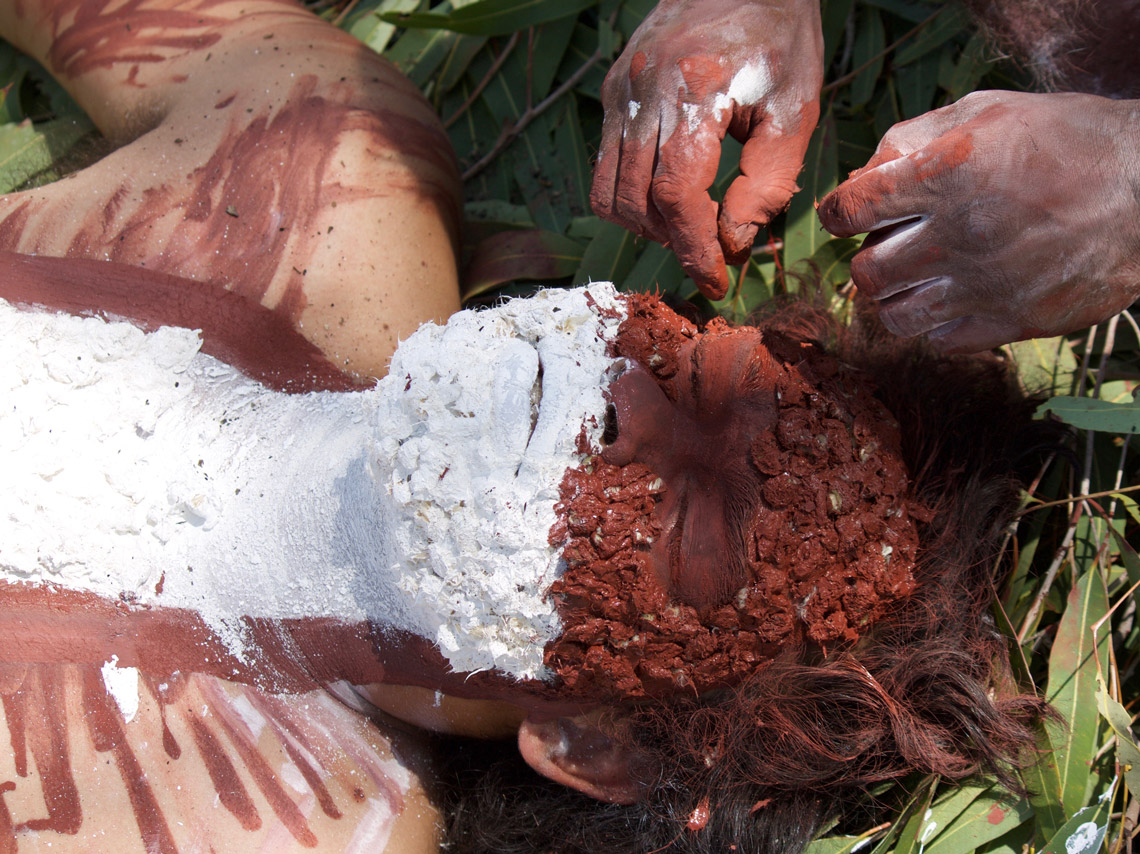
SLow motion performance video
“They [the dancers] listen to this [clapsticks], and it's just like they hitting their bone. The spirit hitting their bone, they get strong. Strong bone. That's why you see them kids real happy and thing." Matthew Martin 2012
Elders reconvened the foundational birrina wodoi and jun.gun dance, wherein the intersection of the two sides of society and the universe intersect and demonstrate their relationships.
This is the power of collections in action: moving knowledges from the past into the present; from the page, the photo, and the tape recording, into the bodies and minds of people and country.
The outcome is wellbeing, as Matthew Dembal Martin has explained:
“They [the dancers] listen to this [clapsticks], and it's just like they hitting their bone. The spirit hitting their bone, they get strong. Strong bone. That's why you see them kids real happy and thing. They’re not looking sad, they're looking forward for dancing or anything, they'll do anything. Now the bone, that ornorr, is strong to do anything, dance. They can run all day too if they want to. They have the Country and for themselves they feel strong, they not weak. The spirit, the singing, the dancing, that makes them healthy. It's always been there.” (23 July 2012).
